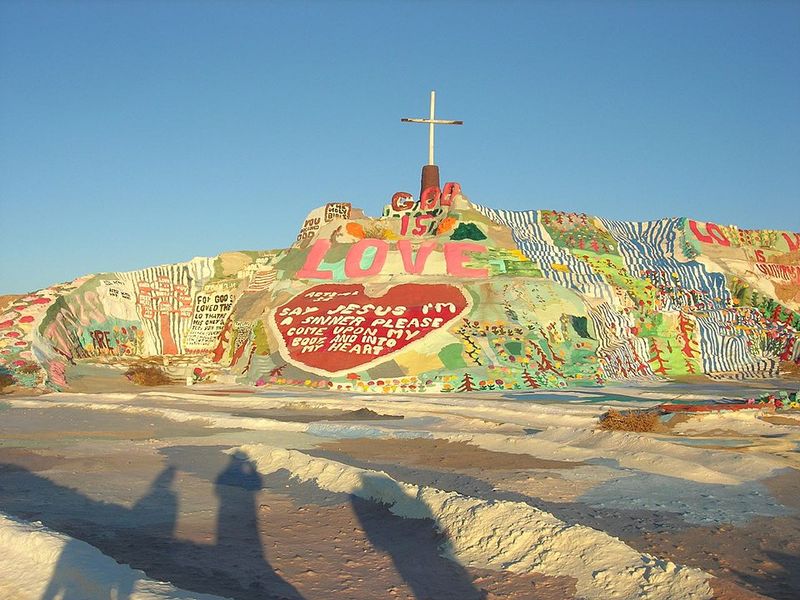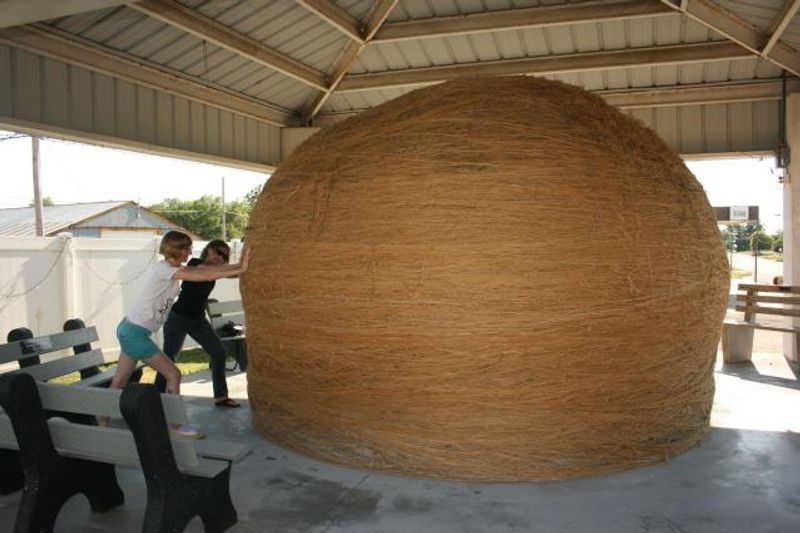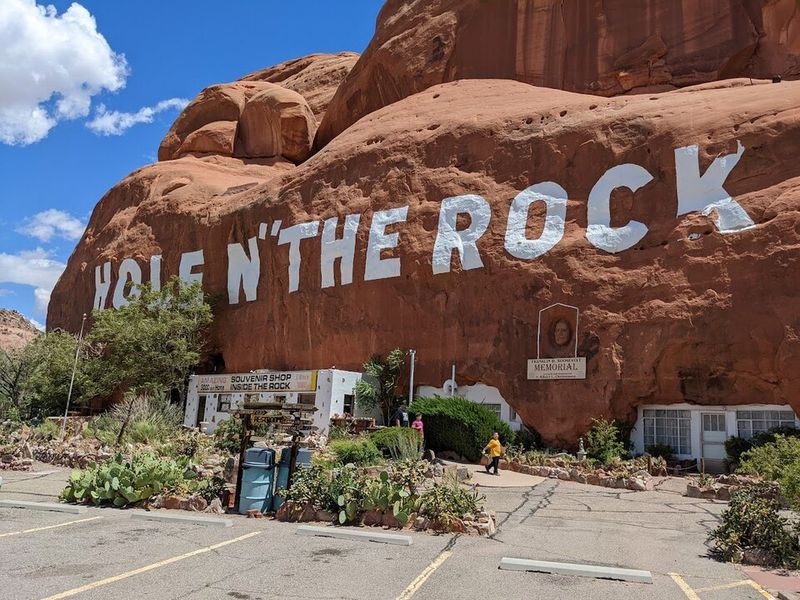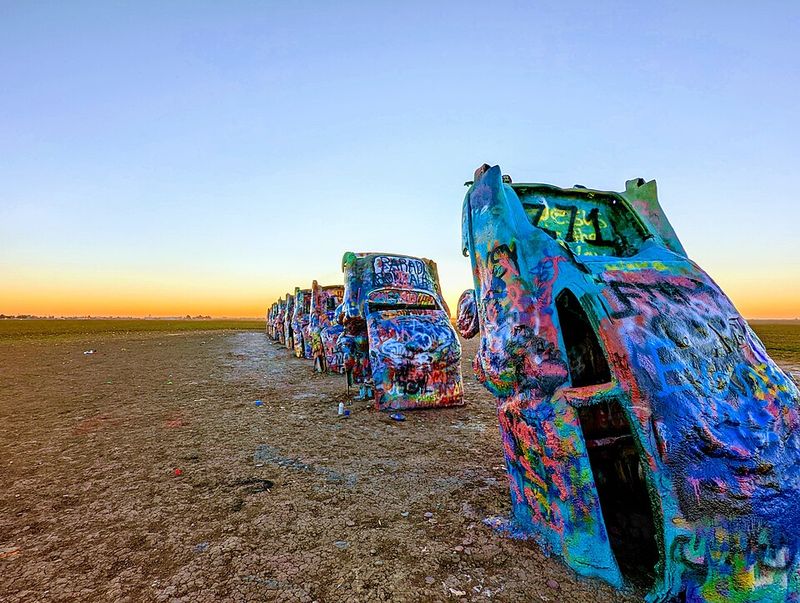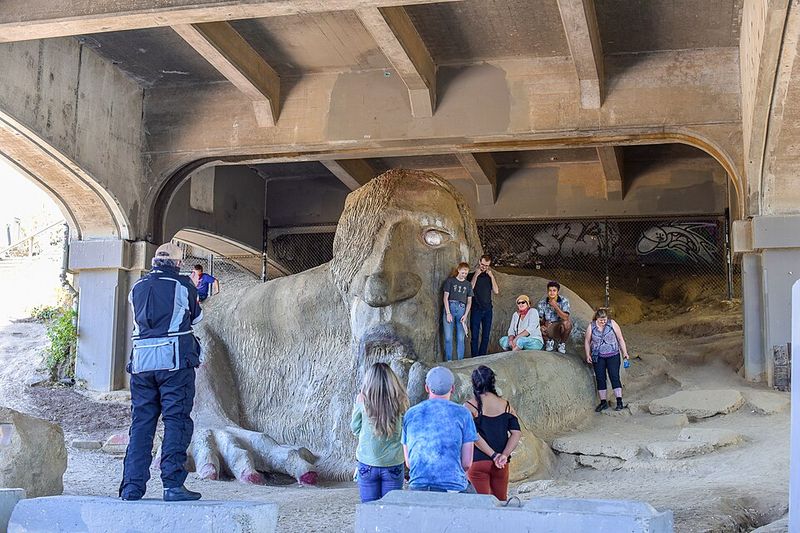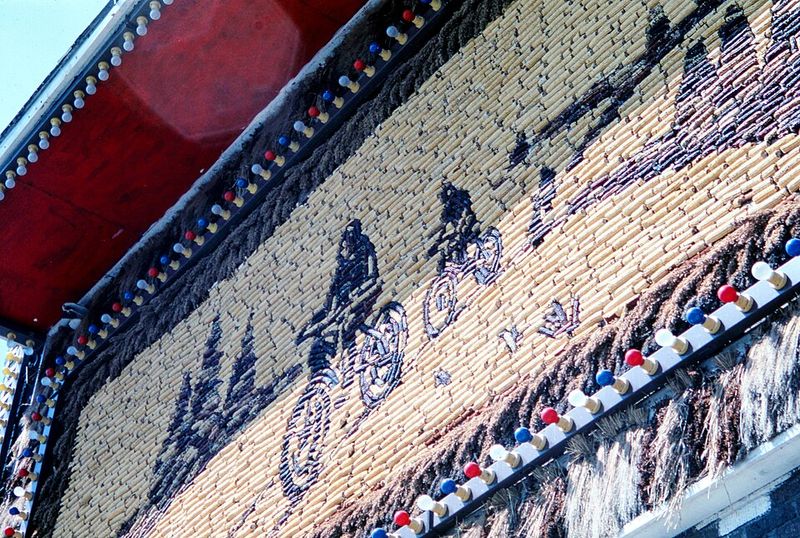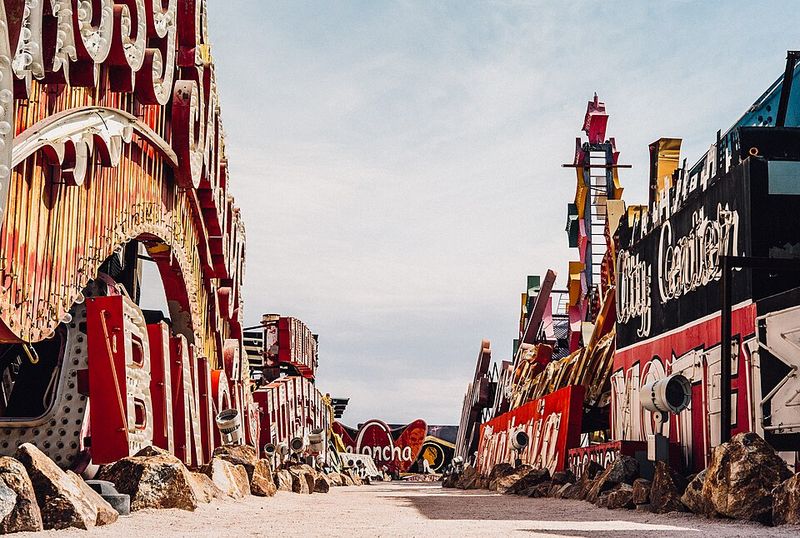America’s highways hide wonders you won’t find in guidebooks or theme parks. From neon boulders in the desert to a bed-and-breakfast shaped like a beagle, these stops turn ordinary road trips into unforgettable adventures. Each quirky landmark tells a story of creativity, community pride, and playful eccentricity. Buckle up – these 14 roadside marvels are worth every detour.
1. Salvation Mountain
In California’s Slab City, Salvation Mountain rises like a technicolor mirage from the desert floor. Crafted by Leonard Knight using adobe, straw, and thousands of gallons of paint, it’s a towering testament to devotion and outsider art. Visitors wander a maze of hearts, flowers, and biblical messages, each brushstroke amplifying Knight’s simple mantra: “God Is Love.” The site’s handmade charm feels both fragile and eternal, drawing photographers, seekers, and road trippers. Layers of paint preserve a living artwork sustained by volunteers. Under the desert sun, its candy-colored slopes transform, proving faith and creativity can remake even barren landscapes.
2. Bubblegum Alley
Bubblegum Alley in San Luis Obispo turns sticky habit into spontaneous gallery. Two tall brick walls drip with thousands of colorful wads, forming swirls, names, and accidental mosaics. It’s equal parts gross-out and irresistible, a quirky tradition that’s persisted for decades. Tourists snap selfies, add a piece, and marvel at the evolving collage of color and texture. Despite periodic cleanups, the gum returns, proving communal art can be as ephemeral as it is enduring. Bring sanitizer, a sense of humor, and your most photogenic bubble. Few roadside stops are this weird, this simple, and this oddly memorable.
3. World’s Largest Ball of Twine (Cawker City)
In Cawker City, Kansas, community pride wraps around the World’s Largest Ball of Twine. Begun by Frank Stoeber in 1953, the mammoth orb now weighs many tons and keeps growing with annual Twine-a-Thon add-ons. Visitors can sometimes contribute a strand, earning bragging rights and a photo op by the pavilion. The twine’s earthy scent and coarse texture underscore its homespun charm. Plaques tell its tall tale, while locals share twine lore with good humor. It’s an ode to patience, participation, and heartland eccentricity – proof that small towns can bind history together one knot at a time.
4. Carhenge
Carhenge, near Alliance, Nebraska, reimagines Stonehenge with tailfins and steel. Vintage cars, upended and welded into megalithic forms, are spray-painted gray to mimic ancient stones. Built in 1987 by Jim Reinders, it riffs on heritage while honoring American car culture. Walking the ring, you’ll notice shadows cast like sundials and wind humming through chassis. Supplemental sculptures dot the grounds, extending the automotive mythos. It’s eerie, funny, and surprisingly poetic at sunset. Bring a camera, sturdy shoes, and curiosity. On the plains, the past meets horsepower, proving junkyards can birth monuments as enigmatic as any prehistoric circle.
5. World’s Largest Pistachio
Alamogordo’s World’s Largest Pistachio stands like a giant exclamation mark in the desert. The 30-foot nut celebrates local orchards and a family legacy, drawing travelers with photo-ready whimsy. Inside the adjacent shop, samples of flavored pistachios and regional treats tempt tastebuds. Guided tours reveal cultivation methods, irrigation challenges, and harvest rhythms. The sculpture’s playful scale pairs with down-to-earth agriculture, creating a stop that’s both kitsch and educational. Snap a picture beneath the towering shell, then stock up on road snacks. It’s proof that even a humble nut can crack open delightful roadside storytelling.
6. Jolly Green Giant Statue
In Blue Earth, Minnesota, the Jolly Green Giant towers above Interstate 90 with hands-on-hips confidence. Erected in 1979, the 55-foot mascot honors the area’s canning heritage and agricultural roots. Visitors climb a small rise for photos beneath the giant’s emerald boots and friendly grin. A nearby museum showcases vintage advertising, brand history, and local memorabilia. The statue’s cheerful presence turns a routine pit stop into a nostalgic time capsule. Families linger on sunny lawns, swapping road snacks for green-bean puns. It’s roadside Americana at its most wholesome – big, bold, and unabashedly cheerful.
7. Hole N’ The Rock
Moab’s Hole N’ The Rock is a 5,000-square-foot home carved into sandstone, part curiosity shop, part time capsule. Begun in the 1940s, the cave-like rooms showcase ingenious rock-hewn living, from a fireplace to built-in alcoves. Guided tours reveal the original owners’ resourcefulness and eccentric flair. Outside, sculptures, oddities, and desert landscapes beckon photographers. The contrast between cozy interiors and vast red-rock vistas is striking. It’s a testament to DIY grit and the Southwest’s frontier spirit. Stop for souvenirs, stay for the geology-meets-humanity wonder, and leave with a new appreciation for unconventional homes.
8. Dog Bark Park Inn
At Dog Bark Park Inn in Cottonwood, Idaho, guests literally sleep inside a giant beagle. This B&B, crafted by chainsaw-carving artists Dennis Sullivan and Frances Conklin, embodies joyful kitsch with earnest hospitality. The rooms feature canine-themed decor, from bone-shaped pillows to carved pup figurines. Outside, a smaller beagle stands watch over rolling fields and big-sky sunsets. Travelers swap stories on the porch, pet wooden pups, and snap photos beside floppy ears. It’s a folk-art fairy tale for dog lovers and novelty hunters. Come for the Instagram moment, stay for the warm welcome and delightfully dogged details.
9. Seven Magic Mountains
Seven Magic Mountains rises from the Mojave like a neon mirage. Swiss artist Ugo Rondinone stacked massive boulders into seven fluorescent totems, their colors vibrating against the desert’s muted palette. The installation plays with scale and contrast, inviting contemplation and selfies alike. Wind and sun reshape the experience hourly, casting shifting shadows across the sand. Free to visit and minutes from Las Vegas, it’s a refreshing pause from neon casinos. The piece bridges land art tradition and pop sensibility, proving minimal gestures can make maximal impact in vast landscapes.
10. Cadillac Ranch
Cadillac Ranch, west of Amarillo, plants classic Caddies nose-first in the Texas plains. Over decades, visitors have layered the cars with neon graffiti, creating a communal, ever-changing canvas. Spray paint is encouraged – bring a can or find leftovers on-site. The installation nods to America’s car culture and Route 66 lore, blending satire with spectacle. Sunset bathes chrome and color in warm light, perfect for photos. Shoes may get dusty, but imaginations soar. It’s interactive art with a rebellious streak, proving landmarks can be collaborations between artists and everyone who passes by.
11. Paul Bunyan Statue (Bangor)
Bangor’s Paul Bunyan statue celebrates the lumberjack legend with towering swagger. At 31 feet tall, axe in hand, he nods to the city’s storied timber past. Families pose by his boots while locals trade tall tales of blue oxen and log drives. Interpretive signs connect folklore to real logging history, grounding myth in Maine’s rugged reality. The statue’s bright colors pop against evergreen backdrops, especially on crisp fall days. It’s a quick, satisfying stop that bridges fantasy and heritage. Come for the selfie, leave appreciating the industry that shaped a region.
12. Fremont Troll
Under Seattle’s Aurora Bridge, the Fremont Troll lurks with a mischievous grin. Cast in concrete in 1990, the giant clutches a full-size Volkswagen Beetle like a toy, blending whimsy and urban myth. Visitors scramble up its knuckles for photos, while neighborhood murals nearby add color. The site hums with street energy – buses rumble above, conversation below. Rain slicks the troll’s surface into a glistening sheen on misty days. It’s public art with personality, claimed and cherished by locals. Stop for a playful detour that turns an ordinary underpass into legend.
13. Corn Palace
Mitchell’s Corn Palace transforms agriculture into architecture, sheathing its facade with mural-sized corn mosaics. Each year, artists redesign themes using colorful kernels, grasses, and grains. The result is a living billboard for Midwestern ingenuity and harvest pride. Inside, exhibits trace the building’s history and the region’s farming lifeblood. Festivals and basketball games animate the arena, proving it’s more than a photo op. Visitors marvel at the craftsmanship, then examine close-up textures of husks and cobs. It’s a celebratory crossroads where culture, community, and crops meet under whimsical onion domes.
14. The Neon Boneyard (Neon Museum)
Las Vegas’s Neon Museum preserves the city’s electric soul in a glowing graveyard. Retired casino and motel signs lounge in the sand, their tubes buzzing back to life on guided tours. At dusk, restored pieces blaze with retro glamour, throwing candy-colored light across visitors’ faces. Docents dish stories of mob-era marquees, design innovations, and showbiz lore. The Boneyard feels both nostalgic and avant-garde, honoring typography, craft, and spectacle. Photographers find endless compositions in rust, chrome, and neon glow. It’s a luminous reminder that even discarded signs can shine again.

